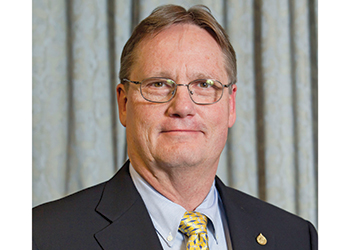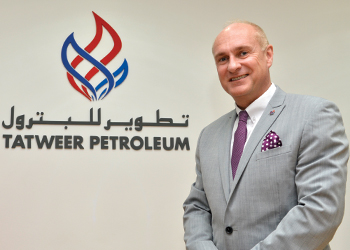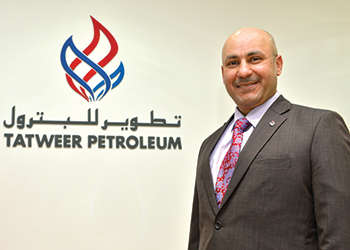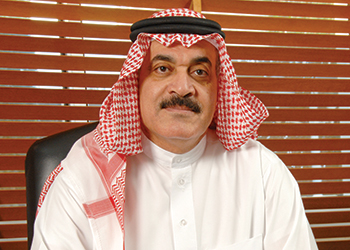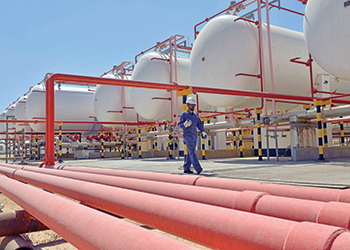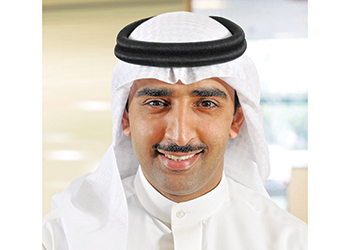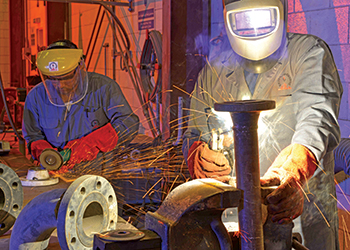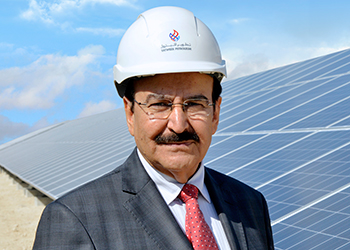
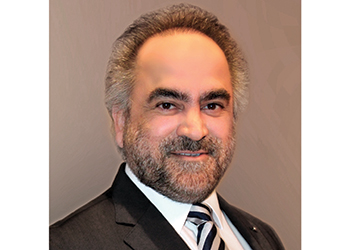 Dr Jawahery ... creating sustainable and profitable value
Dr Jawahery ... creating sustainable and profitable value
Despite a sharp drop in market prices in 2015, GPIC was able to sustain its profitability due to its efficient and streamlined operations and cost optimisation initiatives, says GPIC president DR ABDULRAHMAN JAWAHERY
Bahrain’s Gulf Petrochemical Industries Company (GPIC) plans to achieve this year a 9 per cent increase in exports of ammonia, methanol and urea.
In 2015, GPIC’s exports of ammonia, urea and methanol totalled 1,090,204 tonnes, which is made up of 41,210 tonnes of ammonia, 414,805 tonnes of methanol and 634,189 tonnes of granular urea, says GPIC president Dr Abdulrahman Jawahery in an interview with OGN.
"Again, our intended production for export in 2015, took into account our scheduled shutdown during the turnaround. Overall our 2015 figures reflects the lower percentage of around 11 per cent compared to 2014," he says.
The target exports set for 2015 were achieved in both methanol and urea. However ammonia suffered slightly in terms of export percentages versus planned in 2015.
The highest portion of GPIC’s sales were exported to the US accounting for 39 per cent of the company products combined, while the Far East was our second largest export market, with South America third, accounting for 27 per cent and 15 per cent respectively, he says.
Excerpts from the interview:
What were the highlights of GPIC’s performance in 2015?
2015 was a challenging, yet rewarding year for GPIC. Our major turnaround was timetabled for the first quarter of 2015 and involved a full shutdown of all our plants and the carrying out of prescribed key maintenance plan. GPIC has an exceptional track record for its turnaround management procedures, and our diligent preparations were initiated as far back as May 2013, which I believe, in itself is a leading indicator to how resolute GPIC’s values are upheld regarding health and safety best practice standards.
A full shutdown, as you know takes tremendous focus and dedication from every member of the team, and we are proud to have achieved our production targets successfully given such a major turnaround initiative.
GPIC achieved well over 22 million accident-free man-hours in 2015. This achievement is down to the highest levels of value we place on the care and well-being of both our employees and our contractors alike. Our board of directors and GPIC’s executive management team have always sought to engender a culture of safety among our employees and throughout all business practices and processes.
We were humbled to have been honored and awarded again with several accolades throughout 2015. We take immense pride in being recognised by such esteemed international organisations worldwide for our diligence and contribution to social development and advancement, responsible care, safety, health and environmental global best practice standards. GPIC received over 20 awards and recognitions this year for its pioneering efforts. To highlight a few:
• In March 2015, GPIC received the Economic Sector Trophy of Bahrain e-Government Award at a ceremony held under the patronage of Shaikh Mohammed bin Mubarak Al Khalifa, Deputy Prime Minister, Chairman of the Supreme Committee for Information and Communication Technology;
• The International Fertiliser Association (IFA) honoured both GPIC and Bahrain by appointing myself, the first Arab National to chair its organisation. I accepted this esteemed recognition with great humility and will endeavour to deliver on IFA’s goals and objectives;
• GPIC received two awards at the Mohammed bin Rashid Al Maktoum Awards ceremony held in Dubai in May last year, under the patronage of Sheikh Mohammed bin Rashid Al Maktoum, UAE Vice-President and Prime Minister and Ruler of Dubai. GPIC was conferred with the Best Performance and Most Outstanding Performance Awards in the manufacturing category;
• As part of the Bahrain Labour Day Celebrations and under the patronage of Jameel Humaidan, Minister of Labour, a ceremony was held to honour outstanding institutions in training and human resource development. GPIC was awarded for Excellence in Bahrainisation during this event;
• In June of last year, the GPIC team was awarded the Gold Standard Certification for human resource excellence. The certification Report also highlighted how GPIC achieved the highest score ever to be reported during a first time assessment;
• During July last year, I was deeply honoured and privileged to have been presented with the RoSPA Archangel Award which is the highest accolade in the RoSPA Guardian Angel Awards to be presented in the field of health and safety;
• GPIC was also awarded a Level 1 Gold Status by the Australian Department of Agriculture for bulk-in-ship fertiliser. This reduced risk status under the Imported Bulk Cargo Fertiliser Inspection Protocol is awarded based on a demonstrated commitment to ensure that biosecurity integrity maintained. GPIC achieved this through its recognised contamination management strategies, implemented throughout the supply chain and continuing compliance with the site audit in November 2014;
• GPIC was awarded GPCA’s First Responsible Care Award, in recognition of its diligence to responsible care and corporate social responsibility in all business activities;
• GPIC received two awards from the Arabia CSR Network, firstly the Arab’s Best Social Responsibility Award 2015 and secondly the Best Community Partnership Programme 2015;
• GPIC was awarded the Gulf Cooperation Council (GCC) Environment Award for 2015 in the category of the Best Industrial Establishment that complies with environmental regulations and standards;
• GPIC was awarded Outstanding Humanitarian Work by the regional Network of Social Responsibility;
• As part of Bahrain’s National Day celebrations His Majesty the King Sheikh Hamad bin Isa Al Khalifa presented the prestigious Bahrain Competency Medal of the First Class to, the chairman of GPIC’s board of directors, Dr Ahmed Al Sharyan and me.
What was GPIC’s total production target for 2015? How much of it was achieved? Could you give us a split up of many tonnes of ammonia, urea and methanol GPIC produced?
 |
GPIC ... resilient in a tough market |
We are deeply proud of our hard work and concerted efforts to achieve and exceed our production targets by the end of 2015, given our major turnaround project in the first quarter. We achieved a combined production of 1,465,641 metric tonnes of ammonia, urea and methanol, which is 0.33 per cent above the budgeted figures.
Like previous years, GPIC has continued to maintain operational excellence during the year. In spite of the challenging situations like the severe sand storm in April, higher than before ambient temperatures during the summer months, and lashing rains in November, GPIC was able to maintain all its plants at the highest level of safety, productivity and reliability. This enabled the company to achieve its annual total production target and even record the highest ever production produced in the month of August, compared to previous August recordings.
The highest total monthly production of 136,592 tonnes of all the three products ammonia, methanol and urea, was achieved during the month of August 2015. This surpassed the previous highest cumulative production by 1,069 tonnes which was achieved during August 2013. The highest combined production was achieved despite the rise in sea water temperature by 1.3 degrees Celsius over the 2013 readings.
Was the total production target for 2015 higher than that of 2014? If so how did the company beat the general slump that has affected the petrochemical sector adversely?
With our scheduled turnaround in the early part of 2015, we had factored in the anticipated downtime we would experience. Therefore our total production target for the year 2015 was aligned to reflect this.
As with every strategy we embark on, GPIC’s board of directors and our executive management team ensure we proactively and robustly anticipate market and global economic trends. It has indeed been a challenging year for every industry and sector, and GPIC has not been immune to the impact of these external forces. However, through our adoption of bold production targets, optimizing our production and a dynamic focus on operational excellence throughout the year, we have prevailed through the general slump.
What was the capacity utilisation at all the three plants?
The figures below highlight our successful productive capacity and our capacity utilisation rate is based on percentage operating days. Our percentages for the three plants in 2015 are as follows:
• Ammonia 103.7 per cent;
• Methanol 102.6 per cent; and
• Urea 112.1 per cent.
What were the export statistics for 2015? How does it compare with 2014? What is the projection for 2016?
GPIC’s entire production is intended for export due to the sizeable market for our products. We are one of the very few international petrochemical industries that meet the stringent production quality requirements for key markets such as Australia and the United States. Hence in 2015, GPIC’s exports of ammonia, urea and methanol totaled 1,090,204 tonnes, which is made up of 41,210 tonnes of ammonia, 414,805 tonnes of methanol and 634,189 tonnes of granular urea.
Again, our intended production for export in 2015, took into account our scheduled shutdown during the turnaround. Overall our 2015 figures reflects the lower percentage of around 11 per cent compared to 2014 However, our 2016 strategy and plan is to achieve an increase in exports of 9 per cent for all three products combined.
The target exports set for 2015 were achieved in both methanol and urea, however ammonia suffered slightly in terms of export percentages versus planned in 2015.
The highest portion of GPIC’s sales were exported to the US accounting for 39 per cent of the company products combined, while the Far East was our second largest export market, with South America third, accounting for 27 per cent and 15 per cent respectively.
How much of CO2 is being treated daily after the commissioning of the Middle East’s first carbon capture system by GPIC?
In partnership with Mitsubishi Heavy Industries (MHI), GPIC hosted a technical conference on carbon dioxide extraction during the latter part of 2015. GPIC was the first company in the region to successfully construct its carbon dioxide recovery unit and employ such technology. The conference gave us the opportunity to share our extensive expertise and knowledge with the industry sector in this regard.
Our organisation holds the protection and sustainability of the environment in the highest regard and we will continue to endeavor to share our capability with everyone in this sector and seek out the latest environment-friendly technologies in the petrochemical manufacturing process.
Our CDR, which has been in full operation since 2009, has so far extracted over 700,000 tonnes of carbon dioxide, which has been used to enhance the production of urea and methanol. This translates to an average of 200,000 Nm3/day CO2 being captured by the CDR recovery unit.
How much worth of capex projects were undertaken by GPIC in 2015? What were the main projects undertaken?
As mentioned, 2015 was a complex year for GPIC given its planned turnaround. During the turnaround a total of 52 capital projects were implemented amounting to a total expenditure of $43 million. A few of these key projects are highlighted below:
• Strategic replacement of various catalysts in ammonia and methanol plants;
• Replacement of inlet pigtails and radiant section ceramic blankets of ammonia primary reformer;
• Replacement of inlet pigtails of methanol reformer;
• Methanol storage tank inspection and maintenance;
• Overhauling of syngas compressor, ammonia refrigeration compressor turbine, MUG compressor and urea CO2 compressor;
• Replacement of 11KV transformer cables in substation 1 & 2;
• Replacement of 415 Volts switchboard 61PC-1 &PC-2 in substation 1 & 2; and
• Emergency diesel generator MD 6101 replacement.
All the above work, as well as other major inspection and maintenance jobs and strategic replacements completed during 2015, further enhanced the reliability, efficiency, environmental sustainability and safety of our plants.
Furthermore, during 2015 we undertook several improvement projects such as the refurbishment of a high pressure boiler amounting to $6.8 million. In addition, some safety and health improvement capital projects were implemented such as the purchase of an ambulance and higher capacity fire-tender amounting to $1.3 million. This brings our total capital expenditure undertaken during 2015, to approximately $51.1 million.
What is the status of the proposed capacity expansion at GPIC? How will the capacity expansion impact the company’s bottomline?
GPIC’s board of directors and our executive management team are firmly committed to sustainable growth year on year. Our expansion aspirations for this organic growth and in the petrochemicals market, is firmly built on emergent operational capacity and cultivating our global customer base. We have a talented workforce and supportive business environment which will allow us to continue to grow our global footprint. We also firmly believe that our competitive cost of doing business, combined with our solid partnerships and relationships, at the local, regional and international level, are some of the reasons we anticipate expansion plans to be under way in the near future.
What were the tasks undertaken by the maintenance department in 2015 to improve reliability? How many orders were undertaken for 1) preventive maintenance 2) corrective maintenance 3) modifications?
GPIC has a robust and proactive maintenance strategy. Our maintenance tasks throughout 2015 focused on improved quality, improved capacity and reduced variability. We believe strongly in employee involvement and our maintenance and reliability facets are proactively highlighted within all levels of employees in the company. During 2015, our day to day activities enhanced the operational components of the plant as well as maintaining asset reliability throughout the entire complex.
Regarding profits what was the scenario in 2015? How much profit did the company post in 2014?
Throughout our history, GPIC has always sought out ways to create sustainable and profitable value to our shareholders while pursuing innovation that reduces our impact on the environment. As a growth company we are dedicated to the critical role we must play in meeting the challenges of a changing world. In the petrochemical industry, technology and new ways of working are changing fast and, GPIC has consistently implemented best practice to ensure its sustainability. We have grown, and will continue to grow through our dedication to the three pillars of sustainability, namely planet, people and profits. By addressing climate change and introducing new technologies to reduce or carbon footprint, we have continued to enhance the region’s global economic opportunity and our own sustainable prosperity.
Every industry and every sector felt the impact of economic uncertainty during 2015. GPIC redefined and reshaped its global marketing strategy and assertively continued to build its brand reputation and product quality within the international market. So despite a sharp drop in market prices in 2015, we were able to sustain our profitability due to our efficient and streamlined operations and cost optimisation initiatives. In 2014, market stability and favourable economic conditions allowed GPIC to post profits of around the $200 million mark.
How did GPIC enhance and strengthen its Health, Safety and Environmental (HSE) management systems in 2015? What were the achievements?
GPIC’s leadership commitment to SH&E is built on a genuine belief in the "triple-bottom-line" business concept, where profitability and creating shareholder value is equal to the company’s social responsibilities and commitment to health, safety and protection of the environment. The safety, health and environment department is an integral part of GPIC’s organisation and handles a wide range of functions in safety, fire, environment and security. The department has played a pivotal role throughout the years to engrave safety as a way of life and to lay the foundations for GPIC’s ‘Gpicsable’ culture. Every individual, section and department are the key to contributing a sustainable HSE culture.
Similarly, our SHE department has been pivotal in ensuring the suitable and correct allocation of safety manpower, appropriate risk assessment and positive site preparations which has all contributed to the ultimate cultivation of an extremely safe working environment. Throughout the year, GPIC continued to enhance and strengthen its safety, security, health and environmental (SSHE) management systems including training, capacity building and testing of its emergency response and preparedness.
How many man-days did turnaround 2015 achieve?
One of our proudest and biggest achievements in 2015 was to complete the maintenance turnaround successfully in a safe, secure and environment-friendly manner. A daily average manpower of 4,000 regional and international contracting personnel along with GPIC carried out the jobs safely and efficiently without any accident. A staggering 1.2 million safe man-hours was achieved during the period.
How much did the in-house spare part manufacturing programme save for the company in 2015?
In 2015, in-house spare part manufacturing programme saved the company a total of $525,000.



































































